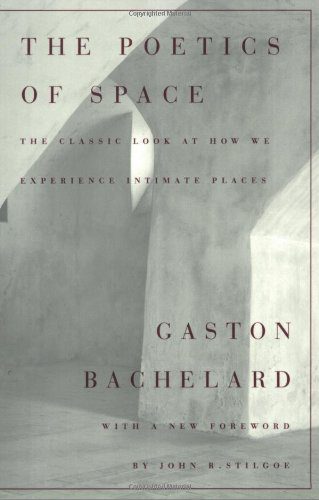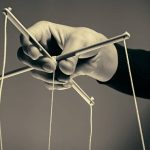“Being an artist is not just about what happens when you are in the studio. The way you live, the people you choose to love and the way you love them, the way you vote, the words that come out of your mouth… will also become the raw material for the art you make.”
New York-based visual artist and recipient of the John D. and Catherine T. MacArthur Foundation 2005 Genius Grant, Teresita Fernandez delivered the commencement address titled: “On Amnesia, Broken Pottery, and the Inside of a Form” to the graduating 2013 class at her alma mater, Virginia Commonwealth University’s School of the Arts. Teresita served as a presidential appointee to Barack Obama’s U.S. Commission of Fine Arts, distinguishing her the first Latina to serve in that role.
Teresita Fernandez 2013 Virginia Commonwealth University School of the Arts.Commencement Speech Transcript
I am deeply honored to be speaking to all of you today.
I have given countless lectures and speeches in my lifetime but never a commencement speech. It is one of the hardest things I’ve ever had to write, so I speak to you today with great humility and as an expert in absolutely nothing.
I prepared this speech with the only guiding factor being that I would be really honest, and that I would not use the word “journey” even once. And that I would avoid any condescending saccharine descriptions of the wonderful future that all of you have ahead of you, out of respect for your sophistication, but also out of an acknowledgement for the fact that life is too exquisitely messy and complex and layered to be reduced to a series of commencement metaphors. So, no paths, roads, journeys, adventures, world oysters, or seizing of anything will be mentioned today.
Instead, I would like to talk to you about amnesia and broken pottery and how forms have both an inside and an outside.
Twenty-one years ago I was sitting where all of you are now and I have to honestly say that I remember very little of it. Parents, my apologies for being so sincere, but you all know exactly what I mean. There are certain moments from those years that I remember lucidly and that have contributed significantly to my foundation and my development as both a person and an artist. Remembering is a funny thing because you never remember the whole of it but rather that burning significant disjointed detail that becomes ingrained in you, a phrase or an expression or a peripheral image or the way someone made you feel. For the most part, these small events will seem insignificant in the moment and yet will be loaded as a subjective personal narrative that wakes something up in you, that causes a reaction that only you can identify with. Indeed life experiences are like that—entirely nontransferrable. And it is precisely those oddly shaped personal experiences that are the cathartic ones that will stay with you.
Remembering is a funny thing because you never remember the whole of it but rather that burning significant disjointed detail that becomes ingrained in you, a phrase or an expression or a peripheral image or the way someone made you feel.
Here are some of the things I do remember from graduate school. When I came up for my big midterm review, I had made a collection of chunky wooden sculptures, a lot of them, I think to prove that I could make things. I painted them with a can of something that I had found at the government surplus store, a color that I’d safely describe as “rust” or “curry”, reminiscent of the color of the buildings in Siena, but chosen for no other reason than because it was available in industrial quantities at the government surplus on that particular trip. The entire faculty listened patiently as I gave the obligatory oral presentation. And then there was a long silence until one of my professors, Joe Seipel, now Dean Seipel (who in those days wore jeans with a little pocketknife attached to the belt) solemnly and very respectfully announced that it all looked like something that I had bought at Crate and Barrel. It was devastating. I died a little that day, but he was so very right… And my agony made me react wholeheartedly and passionately because right there and then I decided with great conviction that there was no way I was going to be the Crate and Barrel artist. To this day I will be working on something in the studio and a tiny little Joe voice will pop up into my mind and cheerfully say “hey that looks like such and such”. And it makes me make better art. Not because of Joe, but because his words sparked an emotional response in me that is at the core of how I make decisions for myself in the studio. It pushed me to recognize how to desperately transform something into a unique gesture that assertively resists being read as generic.
I also remember being perpetually in awe of almost everything Elizabeth King said; she was my only female professor, and the toughest one to impress. I am forever grateful to have learned from how relentlessly demanding she was of her work. Oftentimes, but not at the same time as Joe’s, her high-pitched voice will also pop up when I’m in my studio… and I still have to run to the dictionary sometimes. Thanks to Liz I learned the fine art of curiosity, as well as how to use the words flummoxed, homunculus, vivisect, and rhinocone. If you have been her student you know I’m not making any of this up. I also distinctly remember Liz once whispering to me, as if it were a secret, that “the specific is infinitely more difficult to name than the general” and I use this simple truism constantly as a way of gauging where I’m at, and I know I make much better art when I demand that specificity from myself. I remember what I was eating the afternoon she mentioned I needed to read Bachelard’s Poetics of Space, a book that to this day forms part of how I see the world and was a kind of cornerstone to my creative practice. I remember reading Thomas Mann’s The Magic Mountain in a graduate seminar with the revealing line “there are many different kinds of stupidity and cleverness is one of the worst kind”. Those fifteen words still ring loudly for me. I remember the singular, eerie thrill of being alone in my VCU studio once, at 3 AM, and realizing that I had broken through an idea, an elusive, haunting feeling that I have spent the rest of my life pursuing, and which I have experienced only a handful of times.
“there are many different kinds of stupidity and cleverness is one of the worst kind”.

And it’s not just that I only remember the small details from the college years. The amnesia kept happening.
Eight years ago when I got a call from the MacArthur Foundation telling me I’d won, I was watching my toddler son while nursing my newborn daughter. And the only thing I can remember from that morning was the theme song from Scooby-Doo that was playing in the background. To this day whenever I hear it, I fully expect it to herald good news.
I’m telling you all of this so that you are not surprised if you start forgetting things after graduation so that you’re not shocked when you don’t necessarily know where to start. Because for some inexplicable reason, we seem to believe most strongly not in the actual formal lessons, but rather in those details that get into our heads without our knowing exactly how they got there. Those pivotal lessons in our lives continue to work on us in subtle, subterranean ways.
Because for some inexplicable reason, we seem to believe most strongly not in the actual formal lessons, but rather in those details that get into our heads without our knowing exactly how they got there.
This kind of amnesia is life’s built-in way of making sure you filter out what’s not very important. You graduate today after years of hard work, immersive years of learning, absorbing, processing, accumulating, cramming, finishing, focusing. There are no more reasons, really, to even make art unless you truly truly want to. Of all, you learned you probably don’t need to remember most of the technical or theoretical information, as that’s all easily accessible with a quick search. And what you will remember will have less to do with the past and more to do with how it triggers reactions for you in the present. Oddly enough what we involuntarily do retain is meant to help us move forward. This forthcoming amnesia that awaits you is just another kind of graduation, another step in a lifetime of many graduations.
More than in any other vocation, being an artist means always starting from nothing.
You are about to enter the much more difficult phase of unlearning everything you have learned in college, of questioning it, redefining it, challenging it, and reinventing it to call it your own. More than in any other vocation, being an artist means always starting from nothing. Our work as artists is courageous and scary. There is no brief that comes along with it, no problem solving that’s given as a task. What matters now is not the response or the answer you offer in a class setting, but rather the unique shape you each give to your questions. An artist’s work is almost entirely inquiry-based and self-regulated. It is a fragile process of teaching oneself to work alone, and focusing on how to hone your quirky creative obsessions so that they eventually become so oddly specific that they can only be your own.
An artist’s work is almost entirely inquiry based and self-regulated. It is a fragile process of teaching oneself to work alone, and focusing on how to hone your quirky creative obsessions so that they eventually become so oddly specific that they can only be your own.
The other day I was walking through the Metropolitan Museum of Art and I was fascinated by an ancient Greek ostracon from 487 BC. An ostracon is piece of broken pottery or stone, which was used to write short notes or messages on. This one in particular caught my eye because it was covered entirely with a speech that was written in tiny ancient Greek letters. Ostracons were also the way ancient Greek citizens would vote, you’d simply choose a broken piece of irregular pottery scrap, write the name of your candidate of choice on it and literally cast your vote by throwing it in the heap to be counted. You could also vote for whomever you wanted to get rid of, which is where we get the word ostracize…

I kept looking at the small irregular shard and was taken by how specific it was, how one’s first decision would surely be choosing a particularly shaped shard, followed by the decision of your choice written on its surface. I was enamored with the idea of how what seemed broken, discarded, useless was transformed into a meaningful gesture. How a generic piece of discarded pottery would essentially build up a cacophony of personal expressions, but only in its brokenness, in its sense of having that specific shape because it diverted from the original, whole structure. Of how like a found object, one’s will upon is what would create meaning.
We are conditioned to think that what is broken is lost, or useless, or a setback, and so when we set out with big ambitions we don’t necessarily recognize what the next graduation is supposed to look like. Unlearning everything you learned in college is just an exercise in learning to recognize how the fragments and small bits lead to something that is much more than the sum of its parts.
Unlearning everything you learned in college is just an exercise in learning to recognize how the fragments and small bits lead to something that is much more than the sum of its parts.
In Japan, there is a kind of reverence for the art of mending. In the context of the tea ceremony there is no such thing as failure or success in the way we are accustomed to using those words. A broken bowl would be valued precisely because of the exquisite nature of how it was repaired, a distinctly Japanese tradition of kintsugi, meaning to “to patch with gold”. Often, we try to repair broken things in such a way as to conceal the repair and make it “good as new.” But the tea masters understood that by repairing the broken bowl with the distinct beauty of radiant gold, they could create an alternative to “good as new” and instead employ a “better than new” aesthetic. They understood that a conspicuous, artful repair actually adds value. Because after mending, the bowl’s unique fault lines were transformed into little rivers of gold that post repair were even more special because the bowl could then resemble nothing but itself. Here lies that radical physical transformation from useless to priceless, from failure to success. All of the fumbling and awkward moments you will go through, all of the failed attempts, all of the near misses, all of the spontaneous curiosity will eventually start to steer you in exactly the right direction.
“Forget your perfect offering. There is a crack in everything. That’s how the light gets in.” – Leonard Cohen
In those moments when you feel discouraged or lost in the studio, or when you experience rejection, rest completely assured that what you don’t know about something is also a form of knowledge, though much harder to understand. In many ways, making art is like blindly trying to see the shape of what you don’t yet know. Whenever you catch a little a glimpse of that blind spot, of your ignorance, of your vulnerability, of that unknown, don’t be afraid or embarrassed to stare at it. Instead, try to relish in its profound mystery. Art is about taking the risk of engaging in something somewhat ridiculous and irrational simply because you need to get a closer look at it, you simply need to break it open to see what’s inside. I’ve always loved that line in Leonard Cohen’s song that says, “Forget your perfect offering. There is a crack in everything. That’s how the light gets in.”
Art is about taking the risk of engaging in something somewhat ridiculous and irrational simply because you need to get a closer look at it, you simply need to break it open to see what’s inside.
We live in a meritocratic society, where accomplishments are constantly being measured externally, where forms are always read from the outside, where comfort and lifestyle are often mistaken for success, or even happiness. Don’t be fooled. Our ideas regarding success should be our own, and I urge you to pursue it simultaneously from both the inside and the outside. I agree completely with Georgia O’Keefe, who thought that “whether you succeed or not is irrelevant, there is no such thing. Making your unknown known is the important thing.”
Whether you succeed or not is irrelevant, there is no such thing. Making your unknown known is the important thing. –Georgia O’Keefe
As artists, it will be especially difficult to measure these ideas of what success may be because you have chosen a practice that is entirely dependent on being willing to possibly fail, over and over again regardless of any successes that do come your way.
Success is just another form, with both an inside and outside.
For the most part people are aware of what the outside of success looks like. This is often measured by how long your resume is, where you’ve shown your work, what gallery represents you, what kind of review your show got, how much someone pays for your work, and even what university you graduated from.
Outside success always seems to look terribly glamorous, and every once in a while it can be… But it still never means all that much, and it still never makes the work of the work any easier, if anything it makes it a little harder because the stakes get higher, the possible humble failures become less private and more visible and more cruelly judged.
The day after a successful opening or the completion of a body of work is something I have always likened to a hangover. There is a need to have a big greasy breakfast and get all of people’s celebratory compliments out of your bloodstream. A kind of panic sets in the very next day, an urge to get into the studio because you know you have to start all over again, building something from nothing, seeking the company of those trusted beneficial failures, waiting for those absurd internal dialogues with your own gang of voices. It’s not a very glamorous scenario. But this is precisely what internal success looks like. It is visible only to yourself and while you can trick the rest of the world into thinking you are a good artist, you can never really convince yourself, which is why you keep trying. If you’re lucky and motivated enough to keep making art, life is quiet, you get to work at what you love doing, happily chipping away at something, constructing something, adjusting to a cycle of highs and lows and in betweens, and it doesn’t matter if you’ve been doing it for two years or 50 years, the patterns remain exactly the same. The anxiety continues to set in, the doubts creep in, the baby steps towards mending fragments starts all over again, the cautious urge to peek between the cracks is there. When you find yourself in that place, that’s when you’ll know that the inside is driving the outside.
Both the inside and the outside aspects of success have one thing in common: they both happen only if you’re paying very close attention. Neither one happens casually. There is a kind of will, a hunger, a deep-seated ability to focus that successful people have. As Susan Sontag said, “Be clenched, be curious. Not waiting for inspiration’s shove or society’s kiss on your forehead. Pay attention. It’s all about paying attention.”
Be clenched, be curious. Not waiting for inspiration’s shove or society’s kiss on your forehead. Pay attention. It’s all about paying attention. –Susan Sontag
As you move away from the structures and comforts of a university setting, with built in responses and scheduled deadlines for completion of work and a captive audience of classmates and teachers indulging in your art in a controlled setting know that you will have to create an alternative support structure for yourself from now on. Those of you that are paying closest attention will do well, those of you who are listening attentively to your real needs will become sensitive and receptive to recognizing a good idea, those of you who are willing to engage in an intimate relationship with possible failure, and risk taking will go very, very far.
That hunger, that desire for success is nothing more than a fear of failure, just like when I had that decisive reaction in my graduate review. And the odd thing is that when you are actually succeeding, it tends to be quiet and comes always quite unannounced and without a lot of fanfare. You will, in fact, be the only person who ever really grasps or recognizes the internal successes. The work of the work is visible only to yourself.
The odd thing is that when you are actually succeeding, it tends to be quiet and comes always quite unannounced and without a lot of fanfare.
The most rewarding triumphs always seems to dangle just on the either side of the potentially devastating, awkward catastrophes, the embarrassing clichés, the self conscious doubting. As though the biggest leap can only come as a relentless gamble. A self directed “you go first” attitude… a dare to oneself.
The most rewarding triumphs always seems to dangle just on the either side of the potentially devastating, awkward catastrophes, the embarrassing clichés, the self conscious doubting.
While you’ll have to figure it all out for yourselves, I also wanted to give all of you some practical information on a few things that have helped me along the way.
Art requires time, there’s a reason it’s called a studio practice.
1. Art requires time, there’s a reason it’s called a studio practice. Contrary to popular belief moving to Bushwick, Brooklyn this summer does not make you an artist. If in order to do this you have to share a space with five roommates and wait on tables, you will probably not make much art. What worked for me was spending five years building a body of work in a city where it was cheapest for me to live, and that allowed me the precious time and space I needed after grad school.
2. Learn to write well and get into the habit of systematically applying for every grant you can find. If you don’t get it, keep applying. I lived from grant money for four years when I first graduated.
3. Nobody reads artist’s statements. Learn to tell an interesting story about your work that people can relate to on a personal level.
4. Not every project will survive. Purge regularly, destroying is intimately connected to creating. This will save you time.
5. Edit privately. As much as I believe in stumbling, I also think nobody else needs to watch you do it.
6. When people say your work is good do two things. First, don’t believe them. Second, ask them WHY? If they can convince you of why they think your work is good, accept the compliment. If they can’t convince you (and most people can’t) dismiss it as superficial and recognize that most bad consensus is made by people simply repeating that they “like” something.
When people say your work is good do two things. First, don’t believe them. Second, ask them WHY?
7. Don’t ever feel like you have to give anything up in order to be an artist… I had babies and made art and traveled and still have a million things I’d like to do.
8. You don’t need a lot of friends or curators or patrons or a huge following, just a few that really believe in you.
9. Remind yourself to be gracious to everyone, whether they can help you or not. It will draw people to you over and over again and help build trust in professional relationships.
10. And lastly, when other things in life get tough, when you’re going through family troubles, when you’re heartbroken, when you’re frustrated with money problems, focus on your work. It has saved me through every single difficult thing I have ever had to do, like a scaffolding that goes far beyond any traditional notions of a career.
When other things in life get tough, when you’re going through family troubles, when you’re heartbroken, when you’re frustrated with money problems, focus on your work.
I would like to leave you with a quote from my dear friend Félix González-Torres, who was an extraordinary and generous artist.
“Above all else, it is about leaving a mark that I existed: I was here. I was hungry. I was defeated. I was happy. I was sad. I was in love. I was afraid. I was hopeful. I had an idea and I had a good purpose and that’s why I made works of art.” – Félix González-Torres
If there is a single thing that you remember from what I’ve said today let it be that being an artist is not just about what happens when you are in the studio. The way you live, the people you choose to love and the way you love them, the way you vote, the words that come out of your mouth, the size of the world you make for yourselves, your ability to influence the things you believe in, your obsessions, your failures, ALL of these components will also become the raw material for the art you make.
Graduates, I wish you all conviction, patience, and a sense of joy in your work. May you each come up with your own “good purpose”, and may it drive you to leave indelible marks.



1 Comment
Pingback: Kintsugi: The Japanese Art of embracing your Imperfections. – Lanre Dahunsi